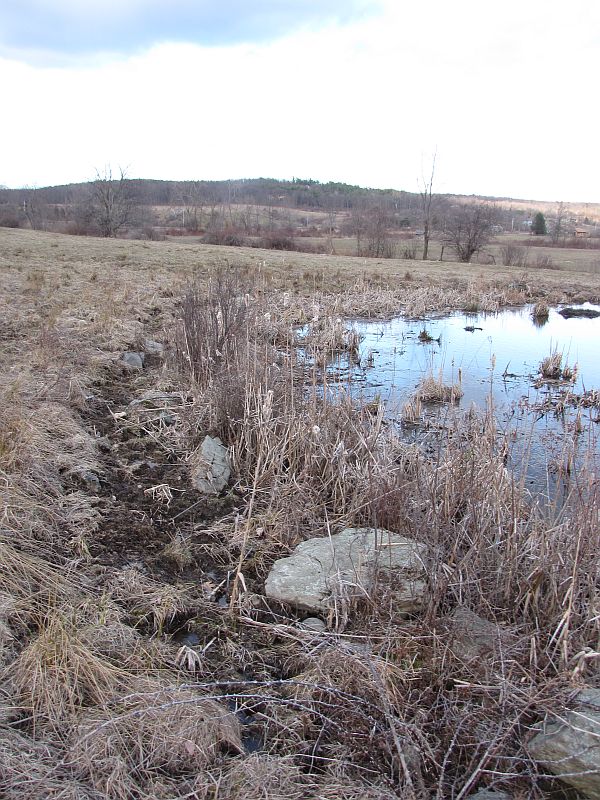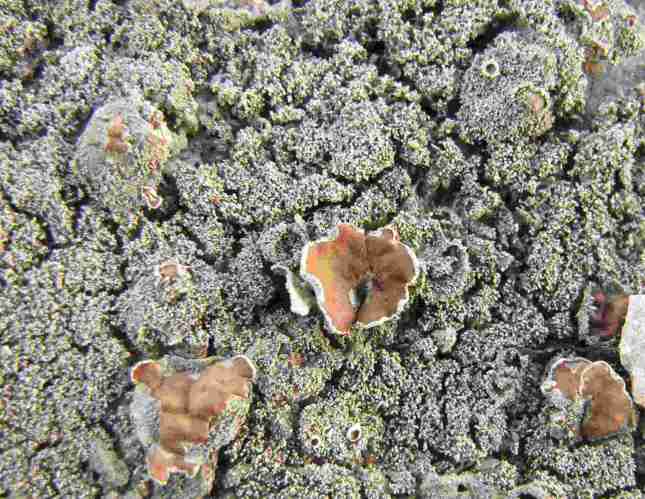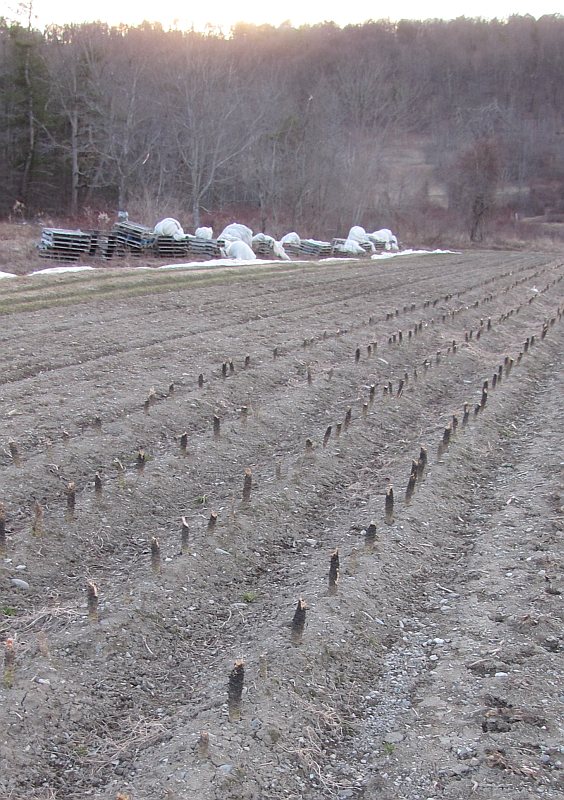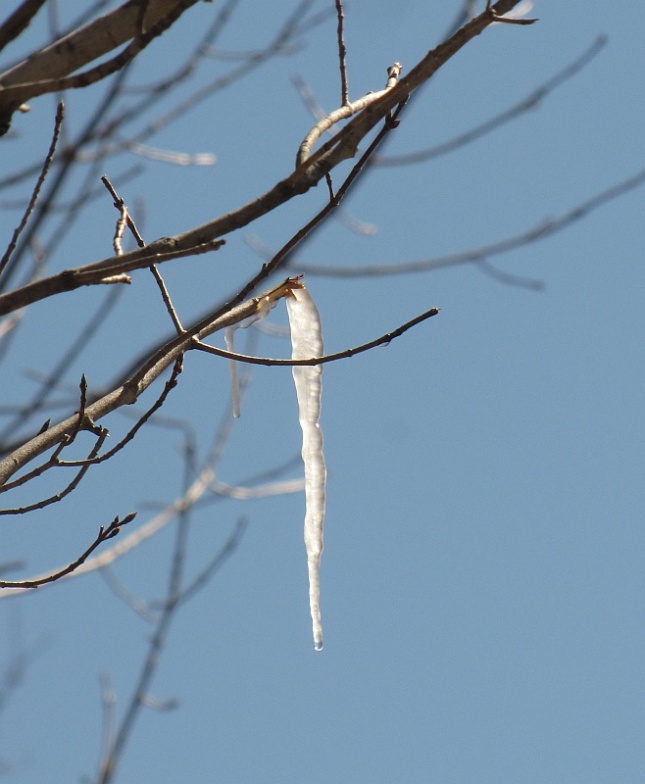Click here for sketch map of outing.
(Pictures relating to the text appear at the end of the notes.)

Birds gleaning from the pastures. At least in part they're pecking through old cow pats looking for (?) seeds and insects. Work in England (see Shrubb's interesting Birds, Scythes and Combines) has shown that change in the use of cultivated fields and pastures can have a large influence on migratory/overwintering birds.

A chert flake, possibly debris from the making of a stone point or tool. This chert may have been quarried elsewhere (for example, at Beecraft Mountain) and brought to the site for working.

This mish-mash of pebbles has been brought here by both stream and glacier. As a result, it probably represents a potpourri of geologies from both near and far.

An intact cow pat. The ring of greener grass may be due to nutrients and moisture seeping out of the dung.

This cow pat has been worked through by birds (?). One can imagine that this sort of crumbling helps the pat get distributed into the soil.

Just a bit more on cow pat ecology. If one flips a cow pat, you find another community: earthworms, beetles, fungi. Cows have fungi in their guts which help break down wood particles. Are the little mushrooms on this pat (the whitish blips on the pat surface) the product of fungi that came on board the pat or did they drift in from elsewhere? No dung beetles at this time of year, but perhaps that's a theme for a later blog.

While we're on the theme of nutrients, it's worth looking at the surroundings of this old hay bale. It was located in a wet part of the field and, while eating, the cows naturally 'deposited' nutrients. As a result, the bale's surroundings are relatively verdant.

The rocky shores of the West Hill Pond. This pond appears in 1940s aerials. It was probably dug by hand. It may have been both a source of and deposit for rocks.

This lichen-covered rock at the edge of the pond is about three feet long, the thick coverage of lichens is evidence that it has been exposed to the air for quite a long time.

These lichens will need to await identification; lichen diversity often reflects both the chemical nature of the substrate upon which they are growing and the nutrients & polluntants in rain and air.

The greenish tinge of these lichens comes from the algal member of the fungi/alga symbiosis that is a lichen. The brown, bowl-like structures are 'apothecia': spore-producing structures that, in some ways, are a lichen's flowers.

The wetland off of 'Faust's Finger' is still a place of dry grass and water, not yet the lively realm of green reeds, dragonflies, frogs, turtles, and flowers.

Deer-chomped stumps of over-wintering Kale; I don't know how much of this was harvested by humans and how much by beasts.

And one last photograph from elsewhere in the County. The sap is flowing: twigs and branches broken off during our last ice storm are now open spigots. A quick freeze caught this Sugar Maple twig 'in the act'.


